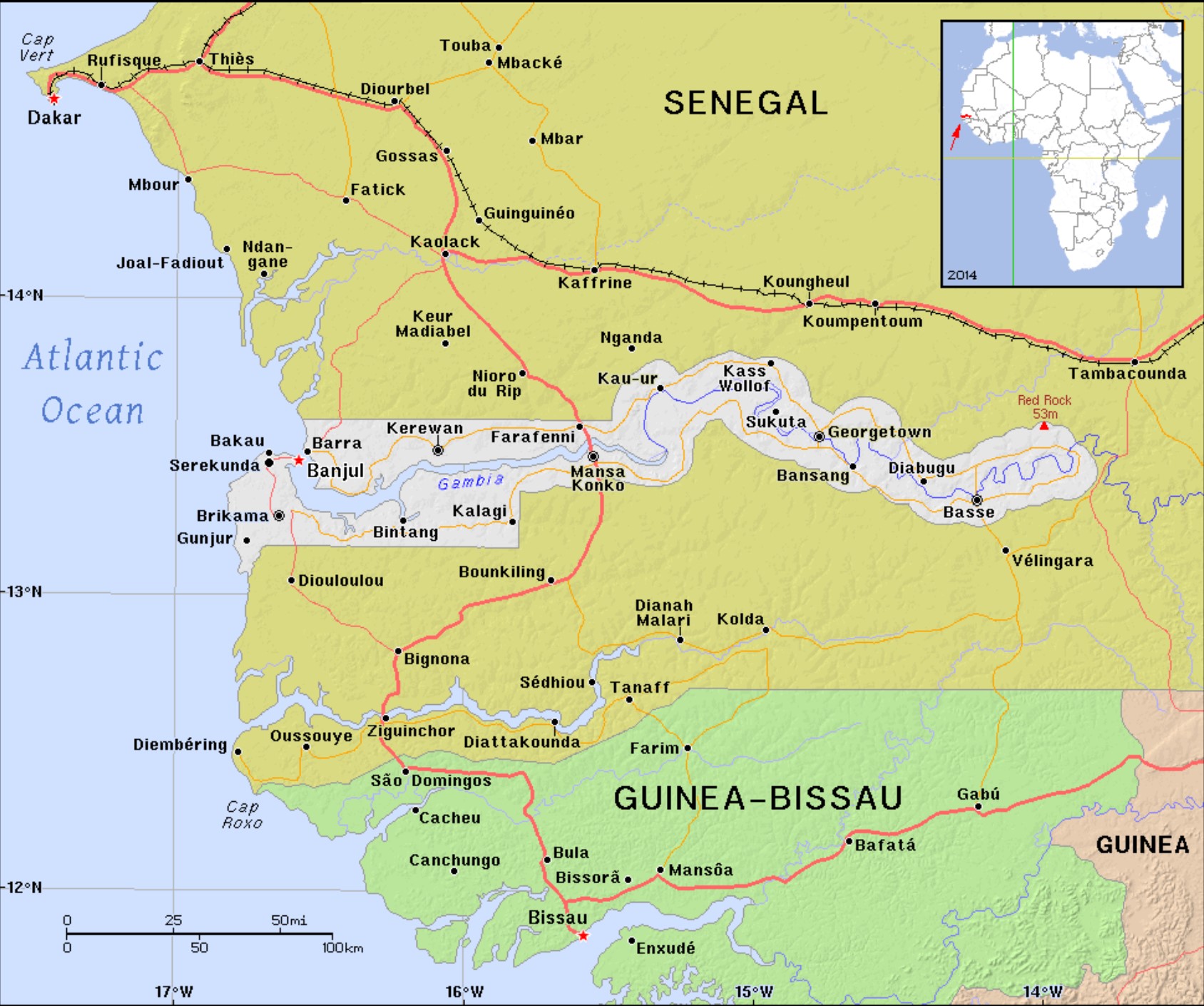Bridging the Divide: How a Bridge in Gambia United Senegal
Anna Johnson - Gambia cuts into Senegal and divides the country into a north and south region along the Gambia River. For decades a ferry system in Gambia was the only way to deliver goods to and from the different regions in Senegal. Traders could expect to spend more than a week waiting for a ferry, by which time their goods may have spoiled. Political tensions between Senegal’s leadership and the former leader of Gambia Yahya Jammeh prevented the creation of a more permanent, efficient route through Gambia. First proposed in 1956, but not financed or completed until 2019, the Senegambia Bridge created a pathway for efficient trade across political boundaries, allowing trade between the north and south regions of Senegal and uniting a previously divided region in Africa.
The Gambia River is a physical marker of the political boundary Gambia creates between two geographically and culturally separated regions in Senegal. Boundaries are the dividing lines between territorial entities such as places or states. Governments create territory and gain legitimacy through the creation and maintenance of these boundaries. Gambia’s previous president utilized the state’s position along the river to enforce a strict political boundary, one that increased their relational power over the much larger Senegal by controlling the flow of goods across the Gambia river. Through the enforcement of this boundary, Gambia created a booming river-bank economy catering to traders waiting their turn to board a ferry and sell their wares. This economy in combination with its control of travel across the river gave Gambia a say in how Senegal’s economy worked. Since the Senegambia Bridge was completed, this economy has all but disappeared. Traders can make the trip from one bank to the other in minutes rather than days. Despite the loss in relational power and the trading economy along the banks of the Gambia river, the bridge represents a potential expansion of millions of dollars of economic material power for each state.
Overcoming the political boundary between the north and south regions of Gambia united Senegal’s economy on both sides of the Gambia river. But it also united a Senegalese culture that had been divided by the political boundary since French and British colonial rule. The Casamance is the region of Senegal to the south of Gambia. For decades, the Casamance has lagged behind the rest of Senegal in economic development, and the people there were marginalized for both their minority ethnic and religious identity. Their relative isolation from Senegal’s systems of power in the northern region has squandered peacebuilding efforts to unite the two culturally different populations, but the Senegambia Bridge has opened up the possibility for efficient, substantive dialogue between the two sides through regular economic interactions which would allow them to build up a relationship based on mutual gain and cooperation.


